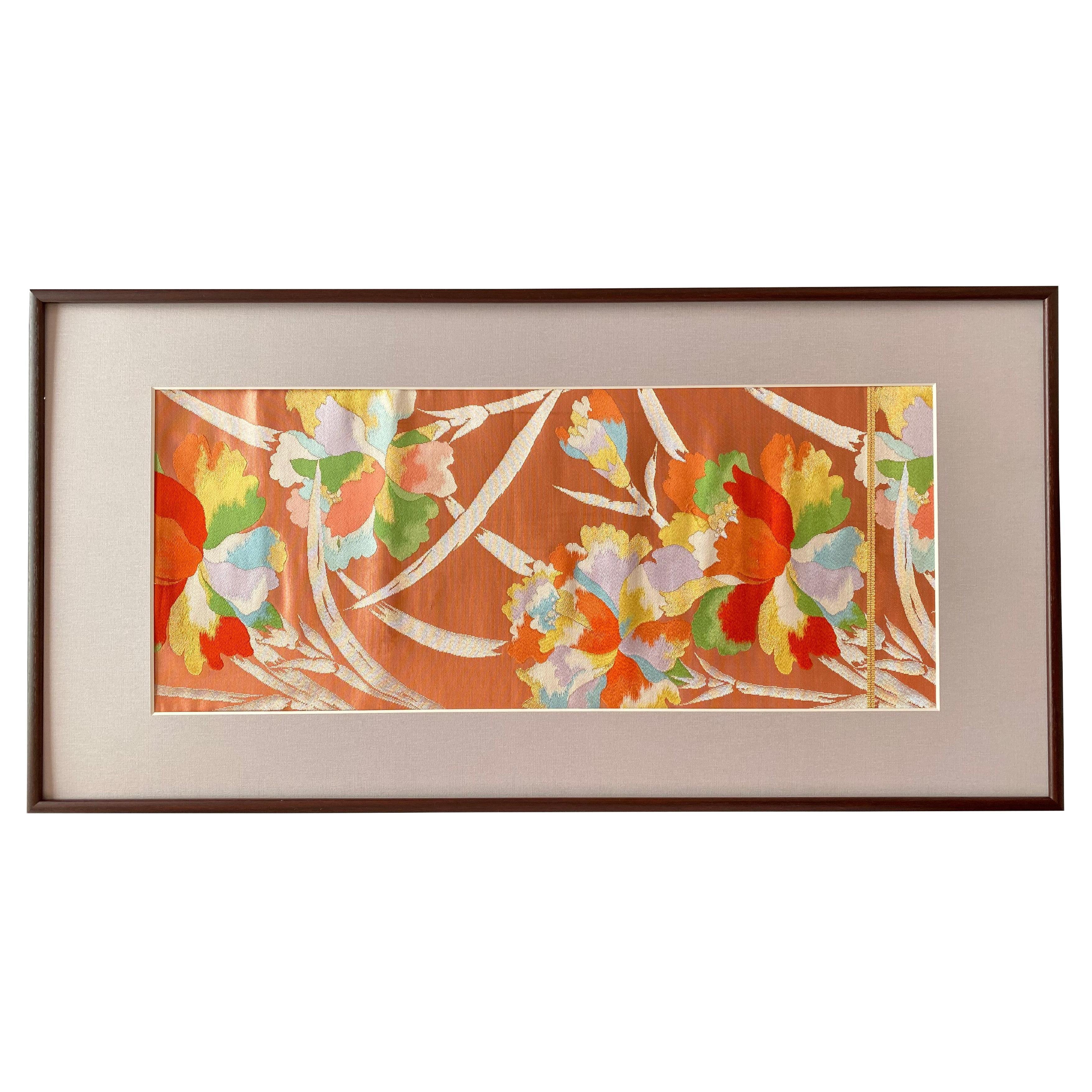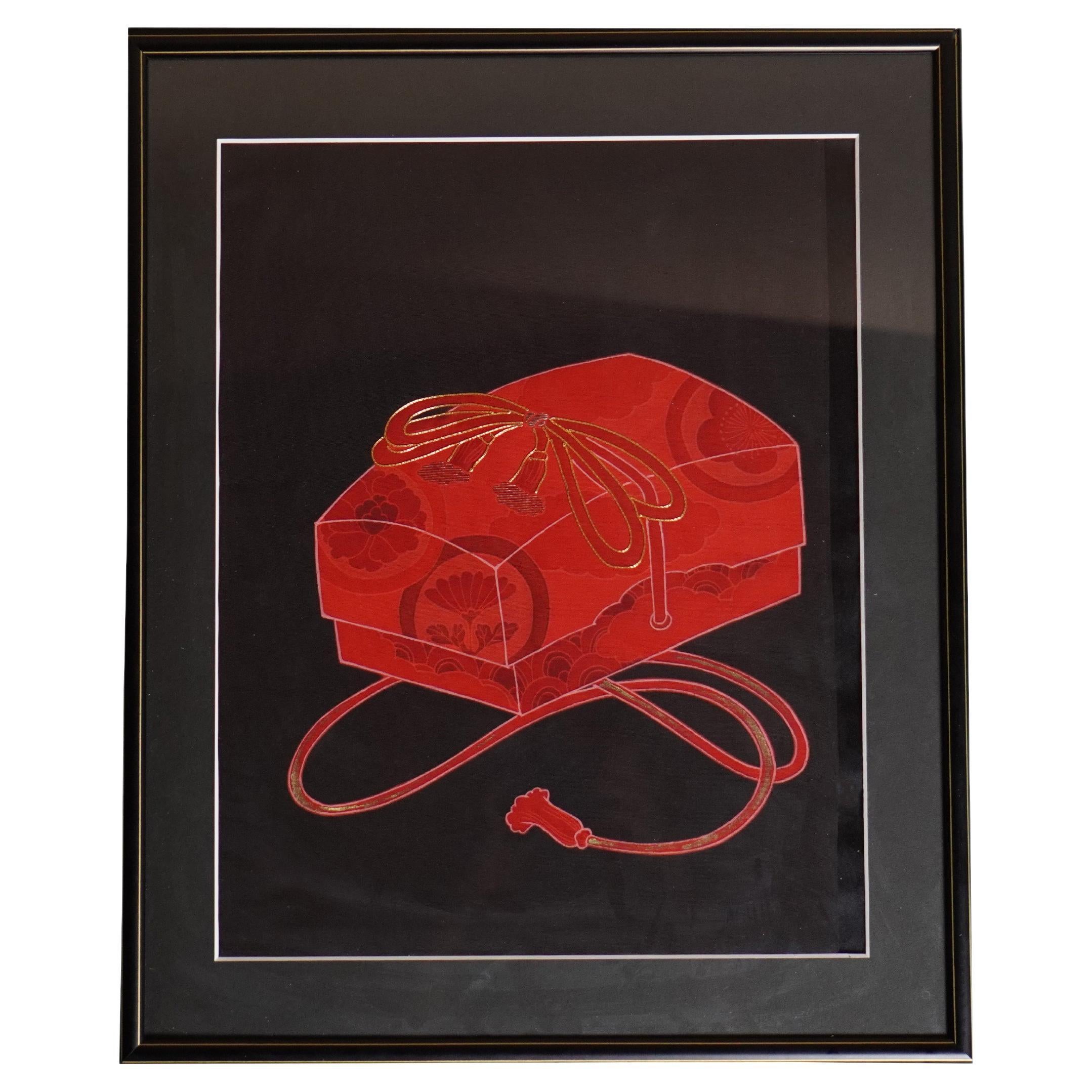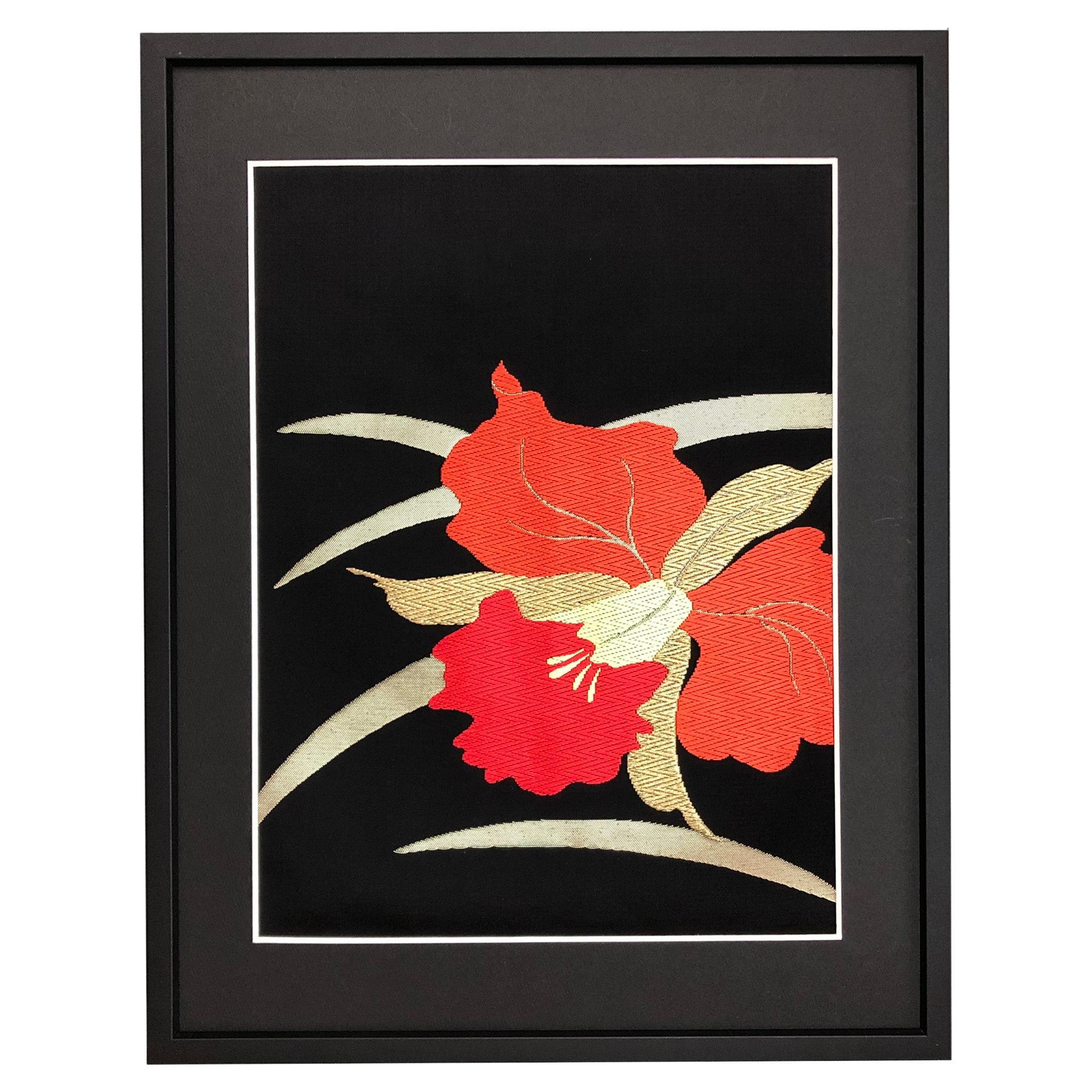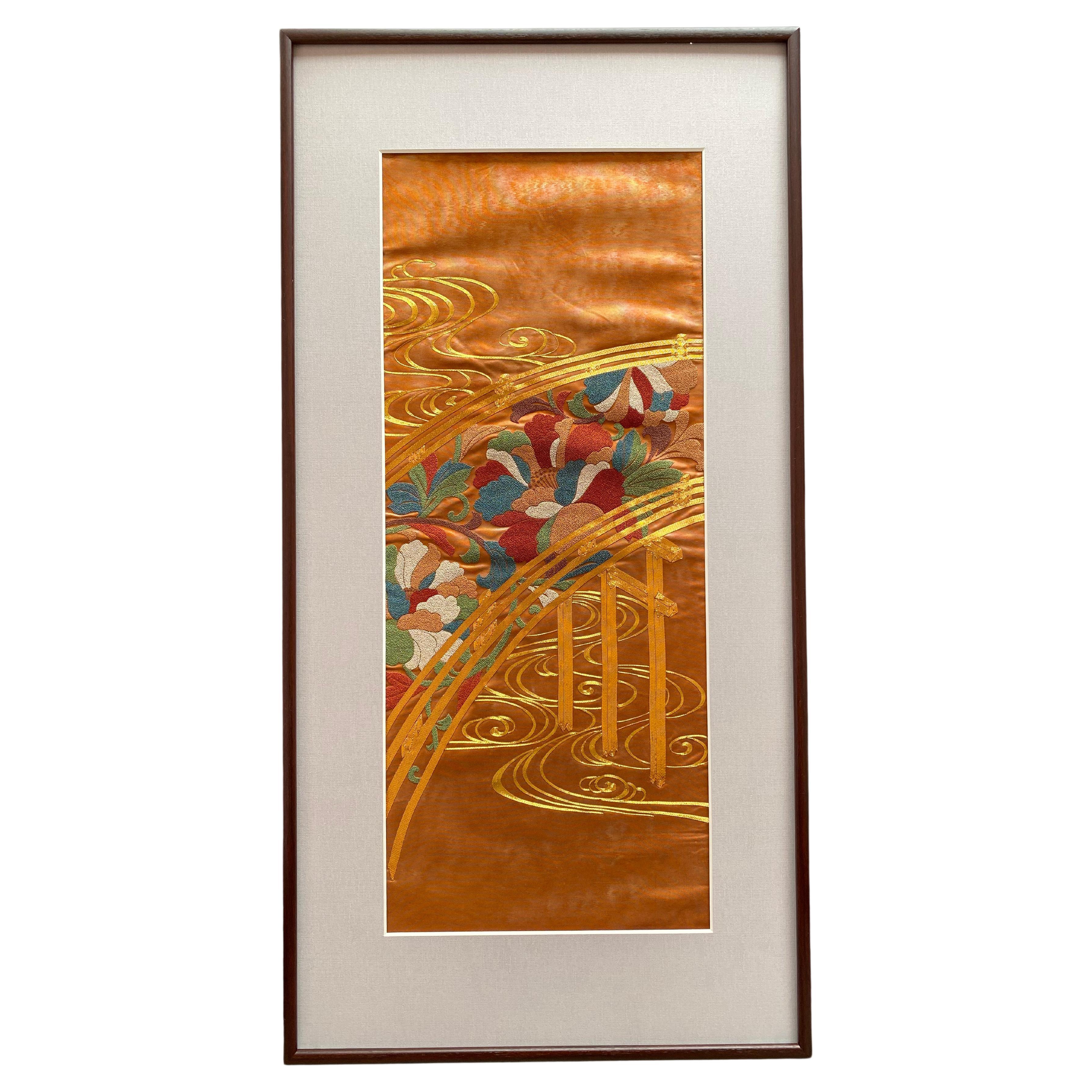Items Similar to Li Yuan-Chia Cosmic Point Multiple Mix Media Painting
Want more images or videos?
Request additional images or videos from the seller
1 of 19
Li Yuan-Chia Cosmic Point Multiple Mix Media Painting
About the Item
Li Yuan-chia
Cosmic 'Point' Multiple
1929–1994
This Original piece from Lisson Gallery London 1968 Exhibition features a painted white lacquered steel panel with 4 magnetic points plastic 2 white, 1 black and 1 red circles. The magnetic points represent magnetic points – Black: Origin + End, Red: Life + Blood, and White: Purity. (THE BLACK POINT IS NOT ORIGINAL - IT IS A REPLACEMENT).
Below is auction results for a similar piece information provided by © 2024 MutualArt Services, Inc.
Cosmic Point by Li Yuan-Chia
Sold Lot #0228
Magnets on lacquered metal panel
24.02 x 35.83 in
edition of 200
Realized Price
Exclusive of Buyer's Premium
13,000 EUR*
(15,401 USD)
Auction Venue/Sale
Ferraton – Damien Voglaire — Modern and Contemporary Art
Sale Date
Sep 12, 2020
More about the artist and piece from Aram Blog May 9, 2014
Li Yuan-chia (1929-1994)
"Increasingly recognised as one of the outstanding artists of the second half of the 20th century, Li Yuan-chia was a highly sensitive artist/poet and audacious experimenter. He produced a very special syncretic art, convincingly combining Chinese traditions of thought and European abstraction, to propose something individual and new. He brought together the concrete, open space we associate with Malevich or Mondrian, with a symbolic use of colour. Li habitually used only four colours: black, which stood for origin and end, red for blood and life, gold for nobility and white for purity. But he was not dogmatic. In his late hand-coloured photographic prints he employed the subtlest nuances of colour.
Li’s guiding concept, artistic and philosophical, was the Cosmic Point. Emerging first out of brush-marks on folding scrolls, the Point later became a solid object, round, square or triangular, about 7cm across, with a magnetic base. It could be moved about on any metallic surface and, with typical generosity, Li opened his work to the participation of others: viewers could move the points about to make new networks, hubs and relationships. Li always wanted the spectator to be the creator.
The Cosmic Point stood for the universe, the origin and the end of all creation, and for the individual’s life journey. To begin with the solid Point objects were monochromatic, using the four symbolic colours – as in the Cosmagnetic Multiple. Later, words were added on the Points and small photographic images, fragments of life and experience, sometimes in the form of ‘points within points’.
At once an artist, curator and poet, Li Yuan-chia’s inclusive approach to art and life anticipated the attitude and practice of many of today’s contemporary artists. He wrote: “You can look at my work symbolically. You can think of it conceptually. You can play with it as a toy or game. Or you can appreciate it for its own beauty.”
Artist Biography and description of Cosmic Point taken from COBO SOCIAL Market News & Reports from November 14, 2016 article titled:
"Spotlight on Li Yuan-chia: The Father of Chinese Abstraction Is on View in London"
Li Yuan-chia (b.1929) was an innovative post-war artist whose creative practice was infused by ordinary daily sources as well as inspired by narratives from the cosmic sphere. Li was born and raised in Kwangsi, South China, and studied in Taiwan. Although he was concentrated on abstract art, Li also developed a strong interest in the western modernism that was pervaded into his art practices too. Moreover, the artist’s working progress was driven by his involvement in a wide range of other creative arts, such as calligraphy, photography, sculpture or even kinetic installations.
In the 1950s, the artist became one of the founding members of the pioneering Taiwanese abstract group Ton Fan (Eastern in English) in which Li and other artists, such as Wu Hao, Ho Kan or Chen Tao Ming, were keen on producing an elaborate identity of Chinese abstraction. Regardless of their commitment to Chinese abstract practices, the Ton Fan group demonstrated a crucial interest in Western modern art, too. In the early 1960s, Li decided to travel to Europe and particularly he visited Bologna, London and Cumbria in the north west of England. Li managed to build a strong art relationship with the UK, where he established a long-term career and founded the YLC Museum. He spent the rest of his life in Cumbria until his death in 1994.
It was a great surprise to see Li’s characteristic mark, the famous “cosmic point”. Having been influenced by the principals of Zen Buddhist and Taoism, Li developed a small distinctive calligraphic circle, usually seen as an adhesive mark on the surface of his paintings. According to the artist, the symbol of the circle – the cosmic point – incites a spiritual approach towards life as well as it employs a philosophical allusion regarding the beginning and the end of things. Furthermore, Li was attracted to colourful hues, such as red, white, black and gold. Favouring these colours, his minimal monochromatic paintings and participatory kinetic installations reflect the meaningful notions of nobility and purity and let these hidden qualities come through to the viewer’s eyes.
Second Biography from Sotheby's Contemporary Art June 6, 2017
Li Yuan-CHi - The Cosmic Point
L i Yuan-Chia was one of Taiwan's earliest pioneers in abstract and conceptual art who made an extraordinary journey from an orphanage in rural China to the avant-garde world of 1960s London. He lived a life that critic Guy Brett concluded was "characterised by abrupt change". From the beginning of his artistic career, he stroke against the restrictions of traditional definition of art and forms, his conservative training and martial law in Taiwan, and later the strange climes after immigrating to Europe. Constantly relocating, he embraced waves of culture shock and transformed them into sources of inspiration and creative freedom.
Li Yuan-Chia first incorporated Eastern philosophy such as Chan Buddhist and Taoist thinking into Western modernism and abstraction, creating his unique stream of conceptualism. Later he founded LYC, a free-form community of creators in the English countryside that anticipated artistic trends of participation and collaboration decades earlier. The LYC was 'the most unexpected and unusual museum' in 'the northernmost part of England' as described by the prominent art historian and critic Paul Overy in The Times on September 4, 1974.
Born into a peasant family in rural Guangxi Province, Li Yuan-Chia was a gifted child and won a scholarship to a boarding school some distance away from home at the age of eight, little did he expect that it was the farewell with his parents and hometown. Three years later, with hopes of getting access to better education, Li was adopted by his aunt and maternal uncle who served in the Republican army. Li Yuan-Chia moved to Taiwan with the Nationalists retreat after the Chinese civil war in 1949. He later lived in Italy, then London before eventually settling in Cumbria, in the north of England, for his last 22 years.
In 1968, Li Yuan-chia's poet friend Nicholas Sawyer, then a student at the Courtauld Institute of Art in London, invited him to visit his family home at Boothby in Banks, Cumberland. He was immediately captivated by Boothby's rural beauty, and saw that it was strangely similar to his hometown Cha Dong village in Guangxi province, mainland China. Like Li's natal village at the edge of the country, Banks also "lies within an elemental otherworldly mountainous landscape, renowned for its peculiar qualities of light, for which the wider region of Cumbria has been acclaimed by artists and poets for centuries." Li eventually settled and never left again except a few visit back to Britain and Europe for exhibitions.
Fascinated by the pursuit of the beginning of all things, he developed the Cosmic Point — a visual element which represented the symbolic image of the universe (or 'allness') — from a small calligraphic mark to a small circle. He used only four colours: black for the origin and the end of all things, red for blood and life, gold for nobility, white for purity, and the 'Cosmic Point' later became the major creative concept for half of his life.
- Dimensions:Height: 35.82 in (90.99 cm)Width: 24 in (60.96 cm)Depth: 2 in (5.08 cm)
- Style:Mid-Century Modern (Of the Period)
- Materials and Techniques:Magnets,Steel
- Place of Origin:
- Period:
- Date of Manufacture:1968
- Condition:Replacements made: The black point is a replacement made from PVC as others are, but slightly taller. Wear consistent with age and use. Minor losses. Minor structural damages. It is a bit discolored (yellowed) where 1 of the magnets sat. A small bend in the metal on the right side - there is also paint chipped in that area. The side edges have some chips. The points are a bit discolored on sides & on bottom tiny chips.
- Seller Location:Miami Beach, FL
- Reference Number:1stDibs: LU1946338833962
About the Seller
5.0
Gold Seller
These expertly vetted sellers are highly rated and consistently exceed customer expectations.
Established in 1979
1stDibs seller since 2016
250 sales on 1stDibs
Typical response time: 1 hour
- ShippingRetrieving quote...Ships From: Miami Beach, FL
- Return PolicyA return for this item may be initiated within 3 days of delivery.
More From This SellerView All
- Christopher Lane Abstract Expressionist Painting of the Passage of NightLocated in Miami Beach, FLChristopher Lane (American,1937) This oil on canvas painting by Christopher Lane is very similar to one of his larger paintings that was displayed at...Category
Vintage 1970s American Contemporary Art
MaterialsCanvas, Paint
- Pablo Picasso Le Chien 'The Dog' Bloch 334By Pablo PicassoLocated in Miami Beach, FLPablo Picasso (Spanish, 1881-1973) Le Chien Pablo Picasso Original etching with sugar-lift aquatint and drypoint on Vollard paper. Thi...Category
Vintage 1930s Drawings
MaterialsTulipwood, Paper
- Bird Fury Painting by Leonardo Nierman, circa 1966By Leonardo NiermanLocated in Miami Beach, FLIntense acrylic on masonite painting Titled Bird Fury by Leonardo Nierman signed and dated in the lower right Nierman 66. According to Art Brokerage: Leonardo Nierman Mexican Artist: b. 1932. Leonardo Nierman's paintings vibrantly come to life as they capture the intensity and spontaneity of the dynamic forces that rule both nature and the cosmos. With swirling whirlpools of color, darting flame-like wisps, and brilliant hues as dazzling as a sun, they are dramatic in their representation of that which is unchallenged, though perhaps not quite understood. Leonardo Nierman's full career includes numerous distinctions, awards, and exhibitions. He has painted murals for the School of Commerce of the University City in Mexico, 1956; the "Golden West...Category
Vintage 1960s Mexican Mid-Century Modern Paintings
MaterialsAcrylic
- Charles Hargens Mare and Foal Horse Painting on BoardLocated in Miami Beach, FLPainting by famed American illustrator, Charles Hargens The painting features two horses - a mare and her foal in a grassy field. The back say Advertising for Weiller Co. Philapa Charles Hagens Image size is 16” tall by 20” wide. It was originally obtained as a gift from Charles Martignette, an extraordinary collector of illustration art. This is one of a group of horse paintings that Charles Martignette gave my client. According to Heritage Auction House: When maverick collector and historian Charles Martignette passed away in February 2008, his collection was already the stuff of legend, containing multiple canvasses by every major name in American illustration art...Category
20th Century American Paintings
MaterialsWood, Paint
- Yankel Ginzburg Oil Painting of Fish Featured on Book BinderBy Yankel GinzburgLocated in Miami Beach, FLExtremely rare original Yankel Ginzburg oil painting on canvas titled, "Fish" which is featured on the book Binder for his book. The book is autographed to...Category
Late 20th Century American Paintings
MaterialsPaint
- Antique Miniature Hand Painted Portrait Jeweled Nobel Woman Painting Gilt FrameLocated in Miami Beach, FLElegant artist signed hand painted portrait of an aristocrat lady. The beautiful woman is wearing 4 strands of pearls and has additional pearls in her hair. She is wearing a floral h...Category
Antique 19th Century Victorian Paintings
MaterialsBronze
You May Also Like
- Japanese Kimono Art / Embroidered Wall Art, -the King of Peacocks-Located in Shibuya City, TokyoThis work of art, carefully and painstakingly embroidered by Japanese craftsmen, is the only one of its kind in the world. We are proud to present this piece, embroidered with pe...Category
21st Century and Contemporary Japanese Contemporary Art
MaterialsSilk
- Japanese Kimono Art, Garden by the SeaLocated in Shibuya City, TokyoThis work is a tapestry of high quality kimono obi made by skilled Japanese craftsmen and repurposed as Art without compromising its beauty. Magnificent nature such as oceans, mounta...Category
21st Century and Contemporary Japanese Contemporary Art
MaterialsSilk, Thread
- Japanese Kimono Art / Asian Wall Art, the King of PeacockLocated in Shibuya City, TokyoThis work of art, carefully and painstakingly embroidered by Japanese craftsmen, is the only one of its kind in the world. We are proud to present this piece, embroidered with pe...Category
21st Century and Contemporary Japanese Contemporary Art
MaterialsSilk, Thread
- Japanese Kimono Art / Asian Wall Art, Mother's RoseLocated in Shibuya City, TokyoThis embroidery, using kimono obi woven using traditional Japanese methods, is a striking piece of art with a beautiful rose and golden bamboo. The rose...Category
21st Century and Contemporary Japanese Arts and Crafts Contemporary Art
MaterialsSilk, Thread
- Japanese Art / Kimono Art - Seasonal Flowers -Located in Shibuya City, TokyoJapanese Kimono Art by Kimono-Couture Title:Seasonal Flowers This Japanese Kimono Art is a one-of-a-kind wall art, painstakingly created by Japanese craftsmen. The bright pink color of this wall art is made from silk fabric, and the beautiful flowers of the Four Seasons are painted on the fabric. The beauty of the artwork can be appreciated by holding it in one's hands. The point we especially want to convey is the language of plum blossoms. Because of its dignified appearance in full bloom, the plum tree has long been loved in Japan for its meaning of elegance and integrity. The cool silver plum blossoms on a bright pink background give the impression of elegance and integrity. By decorating your room with this Kimono Art, you can experience the Japanese Four...Category
21st Century and Contemporary Japanese Contemporary Art
MaterialsSilk
- Japanese Kimono Art / Embroidered Wall Art -Peony Bridge-Located in Shibuya City, TokyoPeony Bridge by Kimono-Couture *Japanese Kimono Art *Handmade by Kimono-Couture *One-of-a-kind Japanese Art The first thing that catches the eye...Category
21st Century and Contemporary Japanese Contemporary Art
MaterialsSilk, Thread





